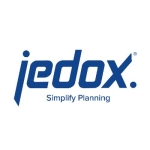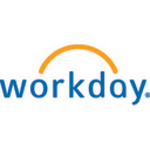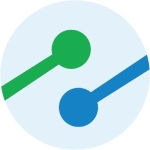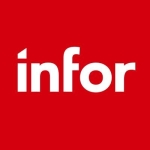What is most valuable?
Hyperion has made our budgeting process and forecast analysis easy and robust, and it is a reliable tool. Primarily, we are using Hyperion for our budgeting analysis and to complete our whole budget cycle within the EPM application. We take the HR data from our legacy system, which is Cyborg, and then load it into Hyperion. We have a very specific type of planning application (PSPB) which is meant for public-sector planning and budgeting for governments, and it has most of the built-in, out-of-the-box calculations for us that we used to do in traditional Excel before and there was always a chance of human error. Security was an issue because we did a lot of emailing back and forth with the sensitive HR data.
How has it helped my organization?
It secures our sensitive data because it's security-enabled and is reliable with it's back-ups, migrations and restoration methodology. We can do LCM exports and import into target servers and applications. You can back up everything. Security tool is also integrated into the application. I'm happy with the security, how it is handled, and how users can integrate with their Active Directory. You don't have to go out of directory to get user names and passwords.
We're evolving with Hyperion as we move along in our yearly cycles. We have come to the point where the end-users are trained well on it. We don't have to go back and forth with emails, sending Excel files, anymore. We used to have big Excel files that you might not even be able to send through emails. Sometimes you have to put them in some common shared drive and then other users have to get it and then approve it and then send it back. That was not only insecure but it was also a hassle.
With Hyperion, all the design is done in one database, which is the central repository for all users. We have around 30 departments and they have different cost centers, and 150+ users are using the application. They're all managed by a team of around 10 budget analysts in our budget department, so the big advantage is it's all in one central repository for them. We have security-enabled for all the cost centers, and departments can log into it and they only see what they're supposed to see based on their access and based on what department they belong to.
With a big entity like government sectors, we have around 3700 employees. Like I said, we have a lot of users for this application and Hyperion has made it easier to access the data, process it, and perform data integration. Data consolidation is easier and running the reports is very easy. Hyperion has some good built-in reports and we are building our budget book from it, which is a big achievement for us.
We used to build a budget book, which is this thick book you have to print, and so putting it together was a huge challenge because you have to combine all the Excel reports with all the word narratives, format it, and then publish it for the public. Now, it's all being done using Hyperion. We're entering data into Hyperion and then pulling the reports out of there and combining the smart view add-on in Excel. Users can connect to the databases in Hyperion and then using Excel, they can pull the grids/reports, build the budget book, and then publish it.
It's easy, robust, reliable, more secure, and has built-in calculations which avoids human errors.
What needs improvement?
Not many people are aware of the new feature called Decision Package. We have a very specific tool in Hyperion called Public Sector Planning and Budgeting. It's for government entities, and it's a part of Decision Package. It's used for government entities to budget their positions, their allocations to different departments, their expenses and to create new budget requests, and to create new positions and do their analysis on it.
The Decision Package is a new feature within this application, and they released it around 2 or 3 years ago. It's working well, but it has a lot of complaints from business users. It is meant for business users, not a technical person, but they always get back to me and ask me a lot of questions and I have to troubleshoot a lot.
Oracle development is still working hard on it, I know, but it's been 3 years and it's still not 100% mature. I have a lot of issues with it. That's one of the areas that I would like to see improvement because we are one of the pioneers in the United States to implement that module in the government sector, so not a lot of users and clients are using it and we don't have a lot of help from our peers. When we talk to different peers, if they don't have it, we don't have something in common to talk about. That's our pain point, and users are having a lot of trouble and we have a lot of complaints about it.
Other than that, Hyperion is a fantastic planning tool. It works great. I always encourage users to use it instead of their accreditation auxiliary reporting, but this tool it puts me down sometimes in front of the business users. If I can't troubleshoot it and I can't give them the answer, I have to create an Oracle SR that can't be resolved in time. We have missed deadlines because of that and I had to create some workarounds from my side. That's how we got it resolved, but it's a huge pain.
It has a lot of limitations, too, on reporting of the text and formatting. For example, with the Budget Book, that's for the whole county and we publish it and we build it out of Hyperion, and if we use the reports from Financial Reporting Studio, we cannot format the way we would like to. It has a lot of limitations on text and formatting. I have tried a lot of formulas to get the format that I want, but it's not fully capable of handling a lot of text data and formatting that I need. That's another area in reporting that needs a lot of improvement.
What do I think about the stability of the solution?
Some stability issues are there with the Decision Package and the kind of application we have built. It has all the out-of-the-box functionality from Oracle, but it's really complicated. It's not just any hyperlink application, which all or most of the clients are using. It's very particular to government entities and how they budget their chart data and their expenses for the whole county. It's a lot of data. We have a data budget worth almost $2.5 billion, which is a lot to handle with all the different accounts and awards, projects, programs that are within our hierarchy.
It has some stability issues. Some bugs are still there, but we have workarounds which are working fine. I would like to see improvements in the specific area that I was talking about.
We are using two tools for reporting. One is the SmartView app that's used with Excel. I like it a lot. I told all of my users to use it because it has all the drilling and rolling and all the capabilities for analysis of online database applications. The other tool, which is called Financial Reporting Studio, is not user-friendly at all and it can improve a lot. It has potential to have some improvement from Oracle from a development point of view. It needs a technical developer to build the reports out of that tool, which is not good for the business users. They try to learn it but it's too complicated for them and it's clumsy and it's not as simple as using, of course, the Excel reporting that they are used to. There are not a lot of options that are available for reporting in Hyperion other than these couple of tools.
Buyer's Guide
Oracle Hyperion
April 2025
Learn what your peers think about Oracle Hyperion. Get advice and tips from experienced pros sharing their opinions. Updated: April 2025.
850,671 professionals have used our research since 2012.
What other advice do I have?
A lot of functional users or managers involved in buying Hyperion don't realize what they're buying and what it's capable of. So, requirement analysis is the key thing. Before you talk to an implementer, determine what it is that you need and what tools Hyperion has available.
There are different tools for different purposes -- planning, forecasting, financial analysis, etc. The tools in Essbase is a little different from the tools in Hyperion. Before Oracle acquired Hyperion in 2006, it wasn't so mature, but not with the acquisition, it's expanded a lot and it much bigger than it was 10 years ago. You now have different out-of-the-box functionalities for each tool that serves the purposes of your requirements.
The key thing is to analyze and see, do you need Essbase or do you need Planning? Within Planning, what is the specific tool? We are using Public Sector Planning and Budgeting, and within that tool we are using the Position Only Model, and in that tool we are using the Decision Package Enable Application, so that's a key thing.
You need to see what you need and go for the implementation. That's why the implementer partners are there.
Disclosure: I am a real user, and this review is based on my own experience and opinions.




















